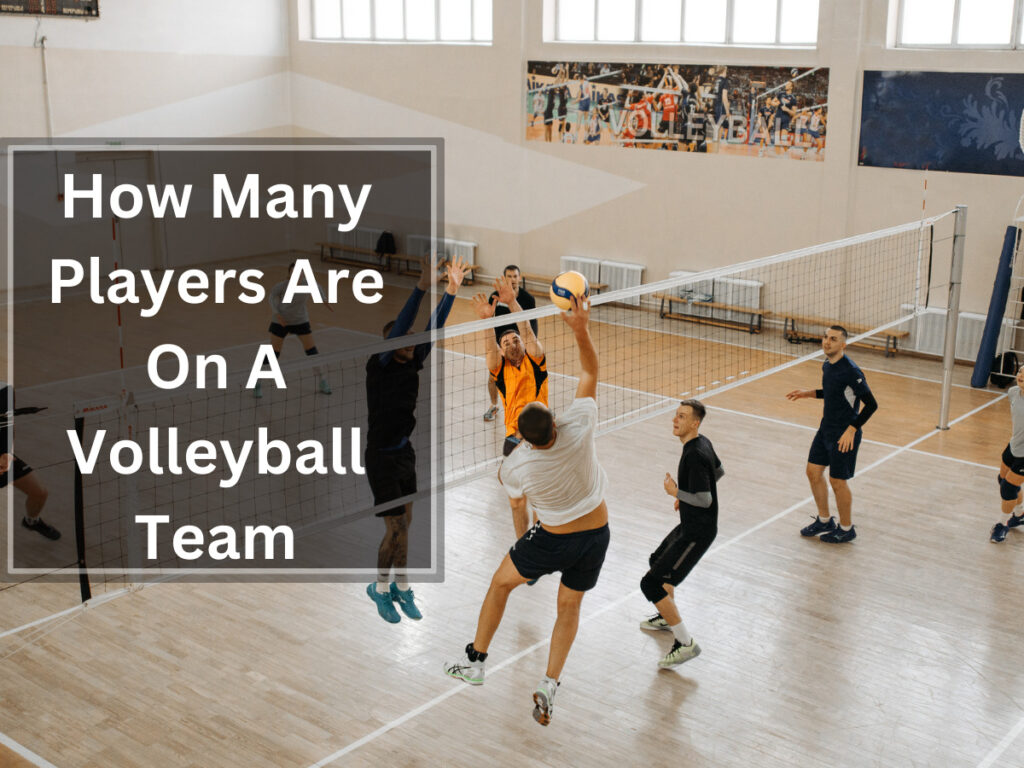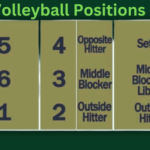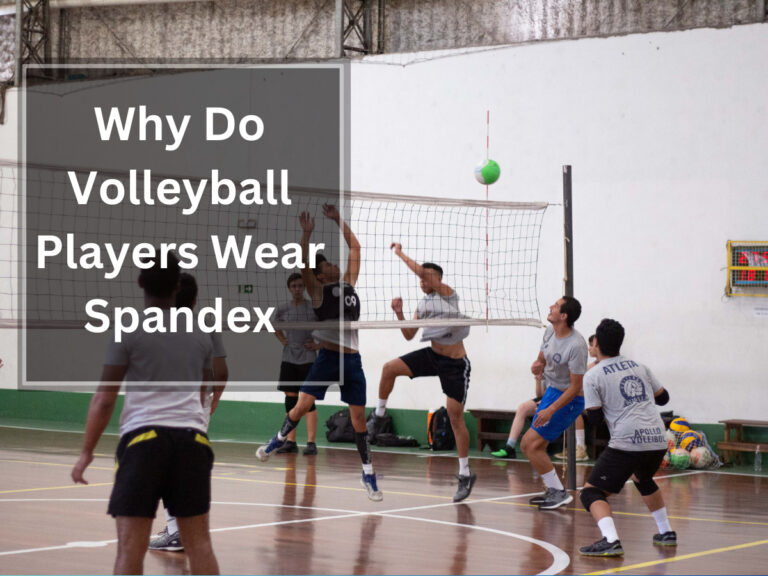How Many Players Are On A Volleyball Team

Are you ready to dive into the exciting world of volleyball teams? Get ready for some serious action, because these teams are packed with players! We’re talking about not just 6, but up to 12 players per team. That’s right, a whole squad of athletes ready to dominate the court.
But here’s the catch – only 6 can be on the court at any given time. So how does it all work? Well, if a team has less than 4 players, they have to forfeit the game. However, sometimes you might see a daring 5-man team in recreational leagues or casual games.
And at the highest level, teams often bring more than 12 players along for moral support. It’s like having your own cheerleading squad! So whether you’re playing beach volleyball with just one teammate or cheering on your favorite college team with their massive roster of 15-20 players, there’s no shortage of excitement when it comes to volleyball teams.
Table of Contents
Volleyball Team Size
In indoor volleyball, teams typically have 12 players, including 6 on the court and up to 6 substitutes on the bench. Having a large volleyball team can present both challenges and opportunities.
One key aspect of managing a large team is understanding volleyball team dynamics. With more players, it’s important to foster a sense of community and unity among teammates. This can be achieved through team-building activities, open communication, and mutual respect.
Additionally, strategies for managing a large volleyball team involve effective player rotation and substitution patterns. Coaches must carefully assess each player’s strengths and weaknesses to create an optimal lineup that maximizes the team’s performance.
It’s also crucial to provide equal playing time and opportunities for development to all members of the team. By implementing these strategies, coaches can harness the potential of a large volleyball team while fostering cohesion and success on the court.
Number of Players on Court
On the court, you’ll find a group of six individuals working together to achieve victory. Volleyball teams consist of six players on each side of the court at once.
It is important to note that violating this rule by having more than six players on the court can result in penalties. However, teams have the flexibility to play with less than six players if necessary.
Although playing with fewer than four players results in forfeiting the game, occasionally, five-man teams can be seen in recreational leagues or social games. Nevertheless, it becomes virtually impossible to win with only four players due to the physical demands and strategic nature of volleyball.
The impact of roster size on team dynamics should also be considered as larger rosters allow for more options and depth while smaller rosters require efficient utilization and cohesion among teammates.
Playing with Less Than 6 Players
Playing with less than a full squad may seem challenging, but a smaller lineup can still showcase incredible teamwork and determination. When playing with fewer than 6 players, it’s important to understand the effects it can have on your team.
With fewer players on the court, there is more ground to cover and everyone must step up their game. Communication becomes crucial as each player needs to take on multiple roles. To make the most out of a smaller team, strategies like focusing on defense and serving aggressively can be effective.
It’s also important to prioritize energy management and avoid unnecessary risks that could lead to injuries. Remember, success isn’t solely determined by numbers but rather by the unity and resilience of your team.
Number of Players on a Team Including Substitutes
Imagine the power and depth a team gains when substitutes are included in their lineup, bringing forth endless possibilities and potential for greatness. The number of players on a volleyball team includes both the players on the court and those on the bench as substitutes. This allows teams to strategically manage their roster and adapt to different situations during a match.
Here are some ways substitutes can impact team performance:
- Fresh Energy: Substitutes can bring fresh energy to the game, injecting new life into the team and helping maintain a high level of play.
- Specialized Roles: Coaches can utilize substitutes with specialized skills or strengths to enhance specific aspects of the game, such as defense or serving.
- Injury Prevention: Having substitutes ready allows teams to quickly replace injured players without disrupting momentum.
Strategies for managing a large roster in volleyball include effective communication, maintaining player morale, and giving everyone opportunities to contribute. Coaches must also balance playing time fairly while considering individual player development and overall team performance.
Bringing More Than 12 Players to a Game
Fortunately, when it comes to bringing extra players to a game, volleyball teams can have 13, 14, or even 15 players lined up – but only 12 can enter the game. Having extra players on the roster can have a significant impact on the team.
It allows for more flexibility in terms of substitutions and strategic adjustments during the match. Coaches can strategically utilize their larger roster by rotating players frequently to keep them fresh and minimize fatigue. This can lead to improved performance and increased energy on the court.
Additionally, having a deeper bench provides an opportunity for younger or less experienced players to gain valuable playing time and develop their skills. However, it’s important for coaches to effectively manage their larger roster by maintaining open communication with all players and ensuring that everyone feels valued and included in the team dynamic.
Volleyball Roster Size
In high school volleyball, teams typically have a roster size of 10-12 players, occasionally reaching up to 14.
College volleyball teams tend to have a larger roster size, averaging around 17-18 players.
Professional volleyball teams usually maintain a roster size between 16-20 players, while international teams often have a roster size of 25 players.
High School Volleyball Roster Size
High school volleyball teams typically have a roster size of 10-12 players, occasionally even up to 14. This allows for a good balance between having enough players for substitutions and maintaining team cohesion.
Here are some key points about high school volleyball rosters:
- The average number of players on a high school volleyball team is around 10-12.
- Occasionally, teams may have up to 14 players on their roster.
- Having a larger roster allows for more flexibility in terms of substitutions and player development.
Having a solid roster size ensures that there are enough players to create a competitive team while also providing opportunities for individual growth. Whether you’re just starting out or looking to take your skills to the next level, being part of a high school volleyball team will provide you with a supportive and inclusive environment where you can thrive.
College Volleyball Roster Size
Get ready to be amazed by the size of college volleyball rosters, because they’re packed with talented athletes who are ready to dominate the court and make their mark on the game.
College volleyball teams typically have 15-20 players on their roster, with an average size of 17-18 players.
Having a larger roster in college volleyball has its pros and cons. On one hand, it allows for more depth and flexibility during games, as coaches can strategically substitute players based on match-ups or fatigue. It also provides opportunities for development and competition within the team.
However, a larger roster can also present challenges in terms of team chemistry and playing time distribution. Building strong team chemistry becomes crucial in ensuring that all players feel valued and contribute positively to the team’s success.
Ultimately, finding the right balance between talent and teamwork is key in college volleyball.
Professional Volleyball Roster Size
Prepare to be amazed by the vast array of talent and depth that professional volleyball rosters possess. They are filled with a multitude of skilled athletes eager to make their mark on the international stage.
Having a larger roster in professional volleyball provides several advantages. Firstly, it allows teams to have specialized players for specific positions and skills, enhancing their overall performance. Additionally, a larger roster ensures that there are enough substitutes available for injuries or fatigue during intense matches. This not only helps maintain the team’s energy level but also prevents overexertion and potential injuries.
However, it is important to note that the impact of roster size on team chemistry cannot be overlooked. Building strong relationships and effective communication among teammates can be challenging when dealing with a large number of players. Therefore, finding the right balance between talent and team cohesion is crucial for success at the professional level.
International Volleyball Roster Size
Now let’s delve into the international volleyball roster size and the selection process for volleyball teams.
In international volleyball, teams often have a larger roster compared to other levels of play. On average, these rosters consist of around 25 players.
The team selection process involves coaches carefully evaluating players’ skills, athleticism, and teamwork during training camps and competitions.
One important aspect of international volleyball is the role of substitutes. Substitutes play a crucial role in providing fresh energy and tactical changes during matches. Coaches strategically decide when to substitute players based on match situations and player performance.
Additionally, substitutes offer support from the bench, encouraging their teammates and analyzing opponents’ strategies.
The inclusion of extra staff members such as therapists, sports psychologists, translators, and liaisons further enhances the overall support system for international volleyball teams.
This comprehensive approach ensures that teams are equipped with not only talented athletes but also a well-rounded support network to maximize their chances of success on the global stage.
Frequently Asked Questions
What is the minimum number of players required to start a volleyball match?
To start a volleyball match, you need a minimum of four players. Just like a symphony needs all its instruments to create harmony, a volleyball team requires at least four players to begin the game.
Can a team have more than 12 players on their roster for a volleyball match?
Yes, a volleyball team can have more than 12 players on their roster for a match. Having a larger roster provides benefits such as flexibility, depth, and competition. Strategies for managing a large roster include effective communication, player rotation, and maintaining team unity.
Are there any restrictions on the number of staff members that can be present with a volleyball team during a match?
During a volleyball match, there are no specific restrictions on the number of staff members allowed. However, the presence of staff members, such as coaches and trainers, can greatly impact the performance of a volleyball team by providing guidance, support, and specialized expertise.
How many players are typically on a beach volleyball team?
Beach volleyball teams consist of a dynamic duo, relying on teamwork and communication to dominate the sand. With no substitutions or coaches, strategies are crucial in beach volleyball tournaments, where every move counts.
What is the role of Volleyball Vault and what kind of content do they provide?
Volleyball Vault plays a crucial role in promoting the sport globally and impacting player development. They provide valuable and insightful content, including articles, drills, training resources, and equipment reviews. Their aim is to produce the most valuable volleyball content on the web.










